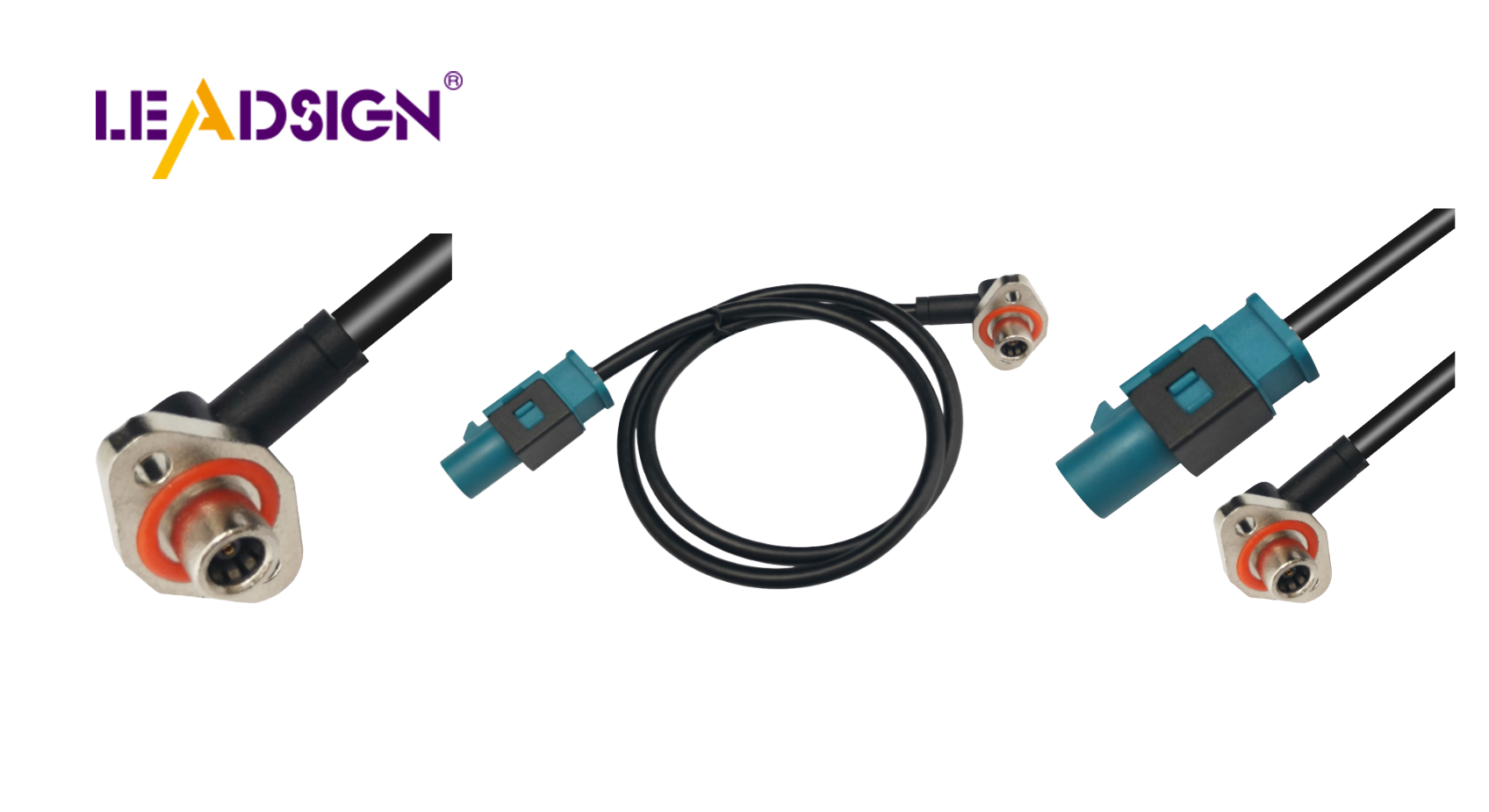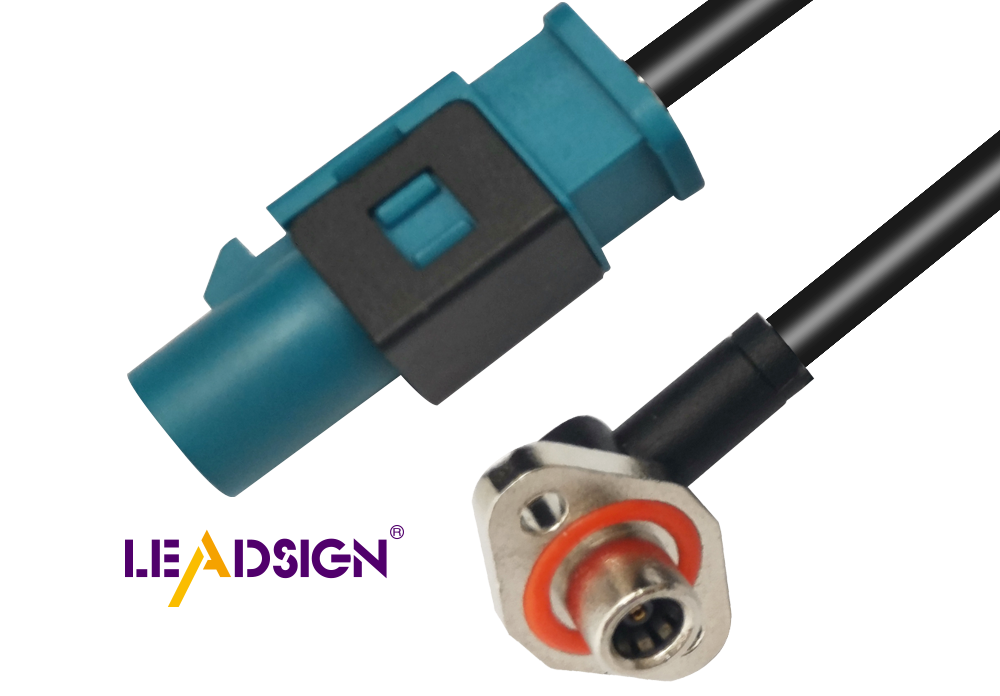Guide to Selecting Semi-Rigid RF Cables for Automotive Wiring Connector Types

Choosing the right RF cable for cars is important. It helps signals stay strong and systems work well. Think about frequency range and weather conditions. Rigid RF cables are great for high frequencies, perfect for cars. Unlike bendy "RG" cables, rigid RF cables use solid tubes, which work better. This choice affects how car systems talk to each other. By knowing this, you can make good choices to improve your car's functions.
Understanding Semi-Rigid RF Cables
Characteristics of Semi-Rigid RF Cables
Semi-rigid RF cables are important for cars. They have a solid copper tube outside. This gives great protection from interference. These cables work well with high frequencies but can't bend easily. Once shaped, don't change them again. This can make putting them in place hard because they might break if not handled right.
Pros of Semi-Rigid RF Cables
Superior Shielding: The copper tube stops interference and keeps signals clear.
High-Frequency Performance: They work well with high frequencies, good for car systems.
Customizable: You can choose lengths and shapes to fit your needs.
Cons of Semi-Rigid RF Cables
Lack of Flexibility: Can't be bent after shaping, making setup tricky.
Potential for Damage: Bad handling can break them and hurt performance.
Limited Reusability: Hard to use again in different setups due to stiffness.
Common Materials and Construction
Knowing what materials are used helps you decide if these cables are right for you.
Outer Conductor Materials
The outside is usually solid copper tubing, which protects well and helps the cable work better. Bigger cables might use steel inside covered with copper, but steel can cause signal loss too. It's important to check the manufacturer's info when using steel parts.
Dielectric Materials
Inside material affects how electricity moves through the cable. PTFE is often used because it insulates well and stays stable in different temperatures, keeping the cable working in various conditions.
Needs for Car Use
When picking a rigid RF cable for cars, think about special needs. These cables help keep signals clear and systems working well in vehicles.
Weather Factors
Heat Resistance
Car areas have big temperature changes. You need a rigid RF cable that can handle very hot and cold temperatures. These cables work from -40 °C to +105 °C. This range keeps your car's communication steady, no matter the weather. Research at Lund University shows how heat affects RF stability. So, choosing a cables with great heat resistance is important.
Shake and Shock Resistance
Cars move a lot, causing cables to shake and get hit. A rigid RF cable must stand up to these forces to keep signals clear. Look for cables made to take this stress. This makes sure your car's GPS and radio work without stopping. The ENRG Tech Blog says it's important to think about shaking when picking RF cables.
Build Factors
Flexibility and Bend Limit
Rigid RF cables are strong but need some bending ability for setup. Think about the bend limit, which is how much the cable can bend safely. A smaller bend limit helps fit in tight spots easily. But too much bending can hurt performance. The Mini-Circuits Blog says bending affects RF stability, so pick cables that balance strength with needed flexibility.
Toughness and Life Span
Toughness matters when choosing a rigid RF cable for cars. You want long-lasting cables that handle tough conditions well. Pick cables with strong outer parts like solid copper tubes for great wear protection. This toughness keeps your car's communication systems reliable over time, cutting down on replacements and saving resources.
Compatibility with Automotive Wiring Connector Types

When picking a rigid RF cable for cars, think about connectors. Connectors help cables fit well with car systems. Different connectors do different jobs and have special features.
Types of Connectors
SMA Connectors
SMA connectors are small and work well in cars. They handle high frequencies up to 18 GHz. But they wear out if used too much, so check them often.
SMB Connectors
SMB connectors are smaller than SMA ones. They snap on easily and are good for frequent use. They don't handle as high frequencies but still work well in many car systems.
FAKRA Connectors
FAKRA connectors are made just for cars. They meet tough car needs and stop wrong connections with secure coding. They work up to 6 GHz, great for GPS and radios. Their strong build makes them last long in cars.
Ensuring Compatibility
Connector and Cable Matching
To make sure things fit, match your cable's connector with the car's connector. Like an SMA male should go with an SMA female. This keeps signals clear and systems working right.
Installation Best Practices
Setting up rigid RF cables right is key for good performance:
Avoid Over-Bending: Don't bend cables too much or they might break.
Secure Connections: Make sure all parts are tight to keep signals strong.
Regular Inspections: Check parts often for wear or damage and replace bad ones to keep everything working well.
By knowing about connectors and installing them right, your cable system will work great in your car.
Choosing the right semi-rigid RF cables for cars is important. Think about frequency, weather, and connector fit. Use this simple guide:
Know Your Needs: Find out what your car systems need.
Check Choices: Look at different cable materials and builds.
Ask Experts: Get help from people like RF Engineers.
"Good car wire and RF cable are key for best car work and safety." - LEADSIGN-AUTO
By doing these steps, you can make smart choices to improve your car's performance and dependability.
See Also
Benefits of HFM RF Connectors for Automotive Innovations
Benefits of FAKRA PCB Mount Connectors in Automotive Systems
Key Benefits of FAKRA PCB Connectors for Vehicles
Improving Automotive Data Transfer with Advanced Connectors
Boosting Automotive Data Transfer Using FAKRA PCB Connectors

